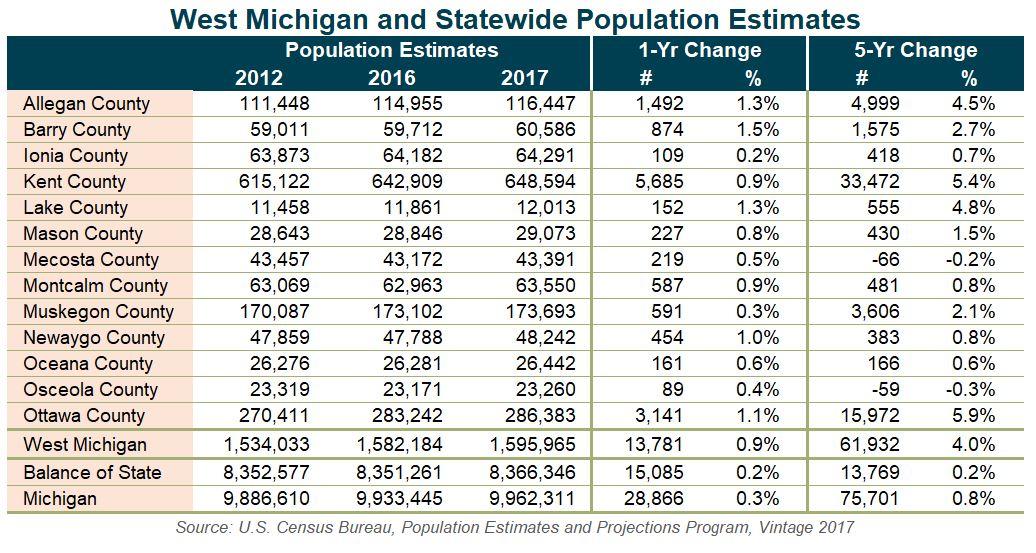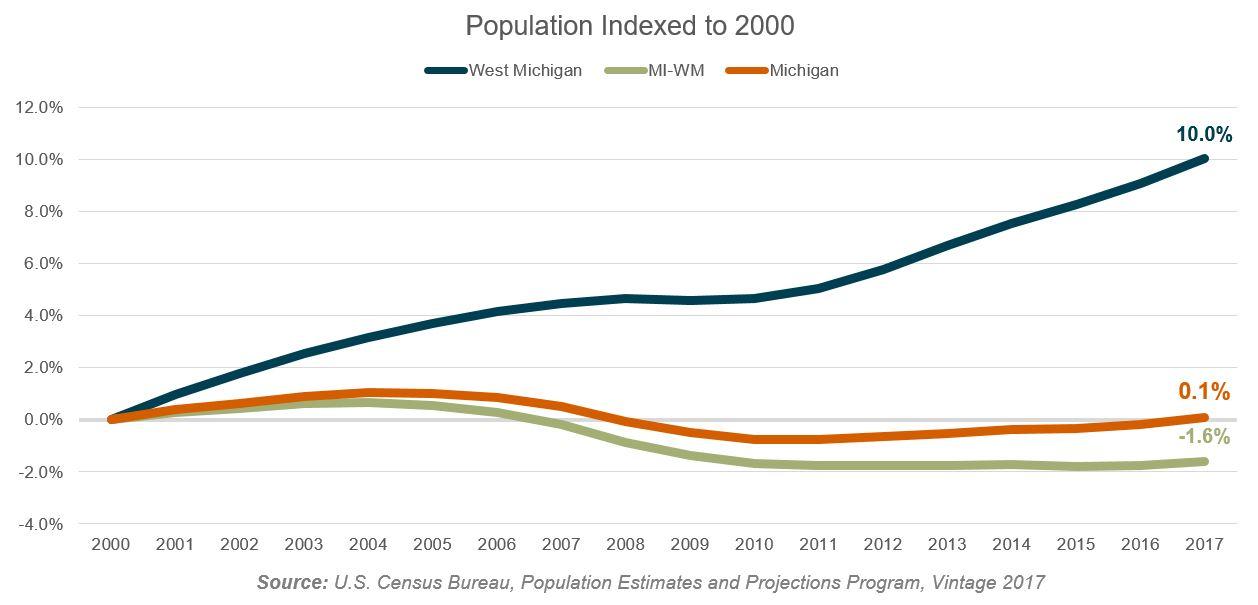Each spring, the U.S. Census Bureau releases sub-state population estimates for the previous year, which importantly includes county-level population levels and updates to estimates from previous years. We now can see how our region fares with regards to population change, and the reasons behind these changes.
West Michigan Surging Compared to the State
From an overall perspective, counties in West Michigan continue to push regional growth well ahead of that seen in the rest of the state. From 2016 to 2017, three of the region’s four largest counties (Kent, Ottawa, and Allegan) have numerically grown the fastest, adding 5,685 (Kent), 3,141 (Ottawa), and 1,492 (Allegan) residents. Combined, the growth in these three counties makes up about three-quarters of the total growth seen in West Michigan over the year.
This is not to discount the growth seen in other counties, and indeed, this is the first year since 2004 that all 13 counties in West Michigan have grown over the year. On a proportional basis, other standout counties include Barry County (which added 874 residents, representing 1.5 percent growth), Lake County (+152, 1.3 percent), Newaygo County (+454, 1.0 percent), and Montcalm County (+587, 0.9 percent).

Twelve of the region’s 13 counties also grew over the past five years, as the region has added nearly 62,000 residents (4.0 percent growth) since 2012. During this timeframe, eight of the region’s 13 counties grew faster than the state of Michigan (0.8 percent from 2012 to 2017).
Components of Change
Importantly, we can also investigate some of the reasons behind this widespread growth in population over the past year, with change being derived from two categories: natural growth (births minus deaths) and migration (international and domestic).
While 11 of 13 counties in West Michigan saw a natural increase due to births outnumbering deaths (let by Kent County with a natural increase of 4,171), a real bright spot is estimated migration over the past year. With this statistic, we see 12 of 13 counties recording a net positive migration overall (inflow to the county outnumbers outflow from the county), with the exception of Ionia County which had a net outflow of 84 people.
Additionally, 11 counties had positive net migration from 2016 to 2017 on both a domestic and international basis. Pulling in the most new residents from other domestic counties over the year are Ottawa County (net inflow of 1,141 domestic), Allegan County (+987), Barry County (+790), Montcalm County (+461), and Newaygo County (+431).
Long-term Trends Remain Positive
Updating the chart Talent 2025 often highlights, such as in last year’s West Michigan Talent Assessment and Outlook, we see that West Michigan has grown by a staggering 10.0 percent since 2000, from 1,450,631 to 1,595,965 residents. This has been led by large proportional gains in Ottawa County (19.5 percent), Kent County (12.6 percent), and Allegan County (10.0 percent). By comparison, the state of Michigan has grown by 0.1 percent from 2000 to 2017, even while recording population gains in each of the last six years.

Future Data Topics
Have you been enjoying these “Data Points” blogs and are interested in other data? Let us know what topics you’d like to know more about on our Twitter @WMTalent2025! We’d like to crunch some numbers that you’re interested in!


